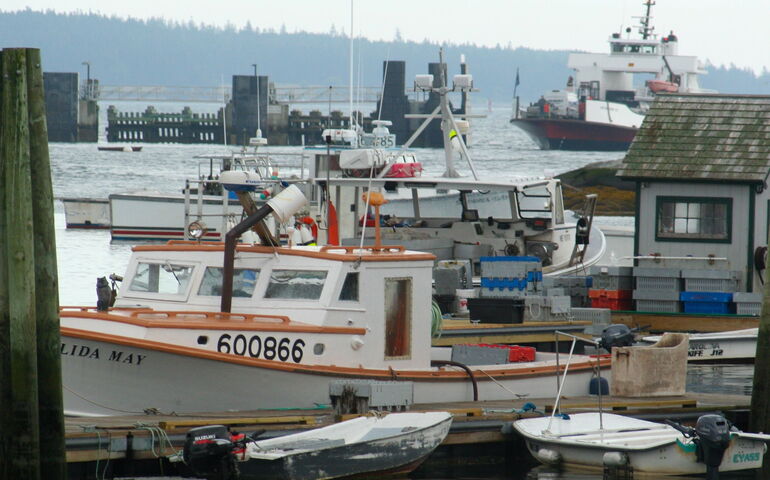Golden seeks to block planned increase in minimum gauge size of legal Maine lobster
 Photo / Laurie Schreiber
A proposal is in the works to temporarily block an increase in the minimum size of lobsters that can be caught in the Gulf of Maine.
Photo / Laurie Schreiber
A proposal is in the works to temporarily block an increase in the minimum size of lobsters that can be caught in the Gulf of Maine.
A proposal is in the works to temporarily block an increase in the minimum size of lobsters that can be caught in the Gulf of Maine.
Increasing the minimum size means that shorter lobster that don't meet the minimum size must be thrown back into the water.
Lobsters must meet certain minimum and maximum size requirements in order to be legally sold.
The sizes, established by an interstate regulatory body called the Atlantic State Marine Fisheries Commission, are part of Maine’s conservation measures designed to protect the animal's breeding population.
Lobstermen determine the size of each lobster that comes out of a trap using a gauge, measuring the shell from eye socket to tail. Lobsters that are smaller than the minimum gauge size must be put back in the water so they can grow and breed, protecting the lobster population for the future.
Last year, the commission found the lobster stock had declined in Lobster Management Area 1 — which includes all of Maine state waters. The commission said the decline was 39%, exceeding the 35% threshold that triggers an automatic increase in the allowable catch size. It would go up one-sixteenth of an inch, from 3 1/4 inches to 3 5/16 inches.
But Maine fishermen have questioned the data used to justify the change, including concerns that ASMFC stock data is out of date. And the Mainers said the size increase would put them at a competitive disadvantage with Canadian lobstermen, if that country doesn’t implement a similar increase.
The commission’s rule is known as Addendum 27. The gauge increase is scheduled to begin in January 2025.
On Monday, U.S. Rep. Jared Golden, D-Maine District 2, introduced a bipartisan amendment to delay the upcoming gauge increase until the commission works with fishermen to reconsider the stock data as well as market effect of the change.
The proposed delay was introduced in the Fiscal Year 2025 Commerce, Justice, Science and Related Agencies Appropriations Act.
“Gauge increases are a significant change that must be informed by the best possible science, and both Maine lobstermen and the fishery itself lose when Canada isn’t held to the same standards,” Golden said.
Golden’s amendment would block federal funding from being used to implement, administer or enforce the gauge increase.
Last fall, the Maine Lobstermen’s Association called on the commission to delay the increase for one year, in order to allow the industry time to prepare for the change and also to address potential issues with Canada.
A big concern raised by association members was that changes to the minimum size could hurt the boat price for U.S. caught lobster.
Downeast Maine lobstermen would have the additional problem of throwing back short lobsters that could then be legally harvested by Canadian competitors, Patrice McCarron, the association’s policy director, wrote to the commission’s lobster management board.
Maine’s lobster landings have grown from 57 million pounds in 2000 to a record high of 132.6 million pounds in 2016.
However, there’s been a drop in recent years. In 2021, the haul was 110 million pounds, followed by 98.7 million pounds in 2022 and 93.7 million pounds in 2023.
And surveys show that the number of baby lobsters in the Gulf of Maine has been declining since 2012, according to the commission.










0 Comments